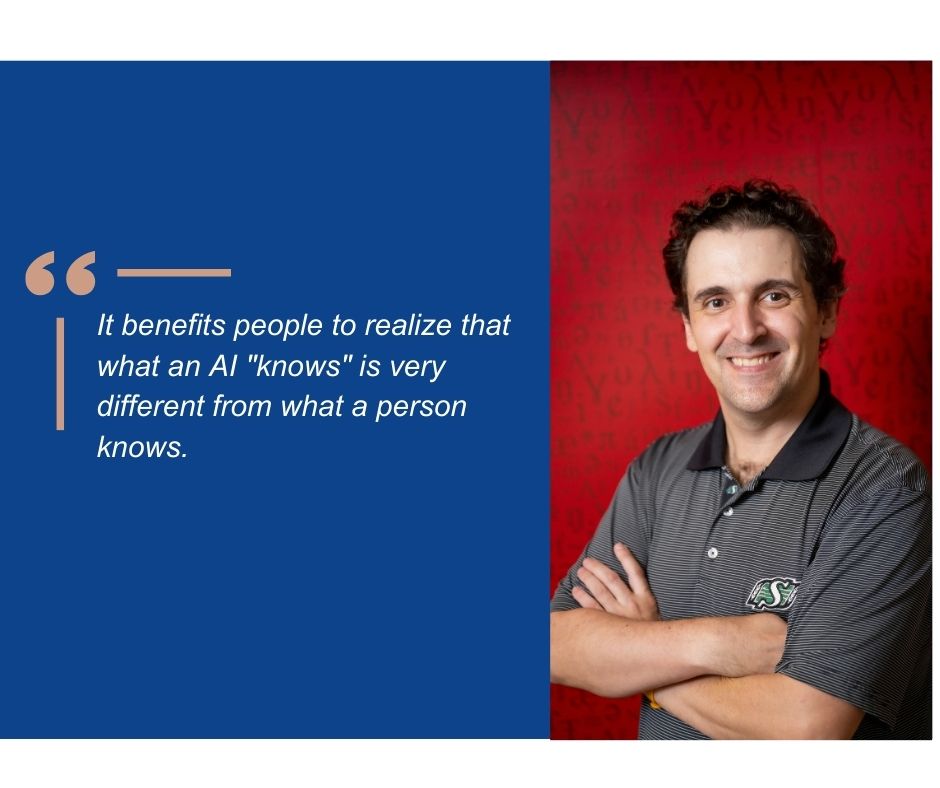*The monthly LangSci Meets AI series features members' research on AI's development in their respective fields. Together, these conversations trace the contours of a landscape rapidly evolving, constantly rerouting our social fabrics. In this second feature, Dr. Garrett Nicolai delineates the nuances of AI and LLM development, and highlights potential biases.
1. What is an AI-related research you're current engaged in?
I'm working on a project with PhD student Changbing Yang on using large language models to help in the documentation of Indigenous languages. Tools like ChatGPT are very versatile for answering questions, but the models also seem capable of contextualizing examples (that is, extracting the goal of an example task, and applying it in unseen cases). Including as few as one or two examples in a prompt can help a model learn a task very quickly. This is a little different than traditional machine learning, which presents examples that the model learns to get really good at solving, before trying to work on new data. This is more like solving a riddle, where all the context to the answer has to be in the question. For example: "Cow rhymes with now; moon does not rhyme with cat; sink rhymes with think. Does fish rhyme with wish?" Ideally, from the example, the model figures out that a "rhyme" is based on the final sounds of a word, regardless of what they are.
2. How would you describe the interaction between computational and mainstream linguistics in researches these days? And how can aspiring linguists position themselves?
Fred Jelinek famously (and maybe apocryphally) said "Every time I fire a linguist, the performance of my speech recognizer goes up!", and while the field is much better for linguists than it used to be, it highlights some of the differences in approaches by computational and mainstream linguists. Computational Linguistics is still a very quantitative field, where an increase in performance is lauded more than a qualitative insight. The field has recognized this trend, and efforts have been made to be more welcoming to linguists, but there's more work to do.
I think that linguists should at least take a programming class or two - start incorporating some computational analysis in their work, and doing comparative work between computational and human language. Computational researchers (and marketing teams) sometimes make grandiose claims about what their models are learning, but I'm always hesitant to equate them with actual language learning. I think we need more linguists, psychologists, and sociologists picking these models apart and seeing what they are actually learning.
3. What are some common misunderstandings about AIs that can affect its development?
Some of the metaphors we use are potentially misleading. "Artificial Neural Networks" were inspired by our understanding of the brain... 80 years ago. The name stuck (although without the "artificial" part), and what we have are much more mathematical than "neural". Likewise, terms like "machine learning" and "artificial intelligence" get conflated with their human equivalents, even if they are very different. We're very unlikely to replace those terms, now, but it benefits people to realize that what an AI "knows" is very different from what a person knows. I feel pride as a linguist, though, that society only started talking about AI appearing when we had a way to hold conversations with it.
4. What are some common / emerging biases within LLMs that have not been sufficiently identified?
I'm worried about language and dialect convergence within the models. LLMs are emerging for every communicative task under the sun, including language learning. But here's the thing - LLMs are largely unsupervised learners - the texts they learn from are not typically annotated for the language they are in. There may be some documents that say "I'm now going to speak French:" and then it continues in French, but the model mostly learns that French looks like French. Is it Parisian French? Is it Québécois? Is it a dialect of African French? The model is probabilistic, so majority dialects are likely to dominate (and specifically, majority written dialects), which is its own problem, but it may also create dialect blends that nobody actually speaks. The strong bias against unwritten dialects (and languages) may also serve towards a decline of linguistic variety, as new speakers interact with AIs as much as (or more than) they do with actual speakers.
5. Feel free to include any comments that are not covered by the previous questions.
I don't mean to sound like a doomer when it comes to AI - it's a fantastic tool that is going to open up a lot of new opportunities, not just in linguistic research, but for society as a whole. I'm just afraid that if we don't pump the brakes a bit (or at least raise awareness of its shortcomings), we could get overwhelmed by a tidal wave of misuse, empty promises, and ultimately disappointment when it's behaving very differently from how people expect.
